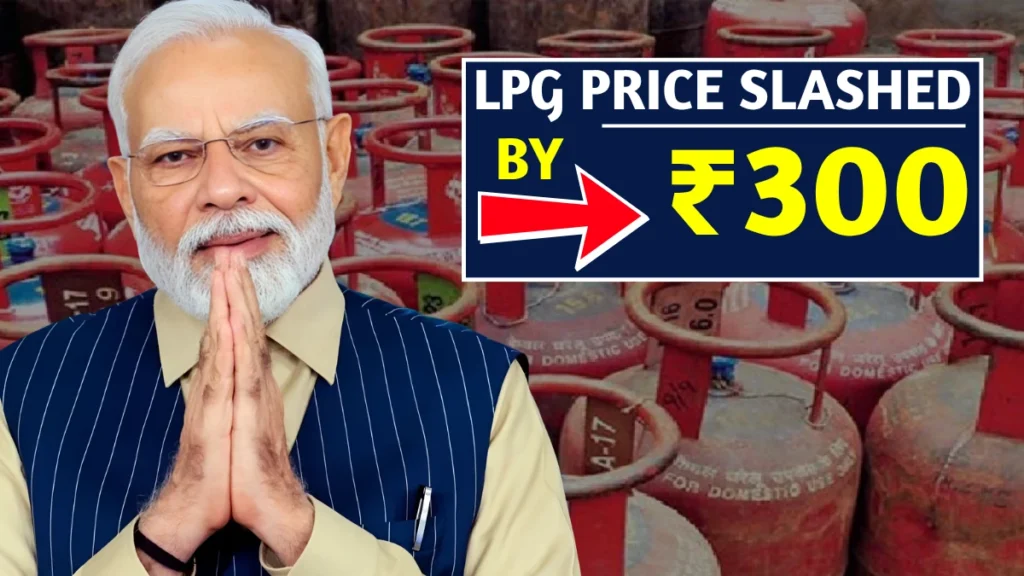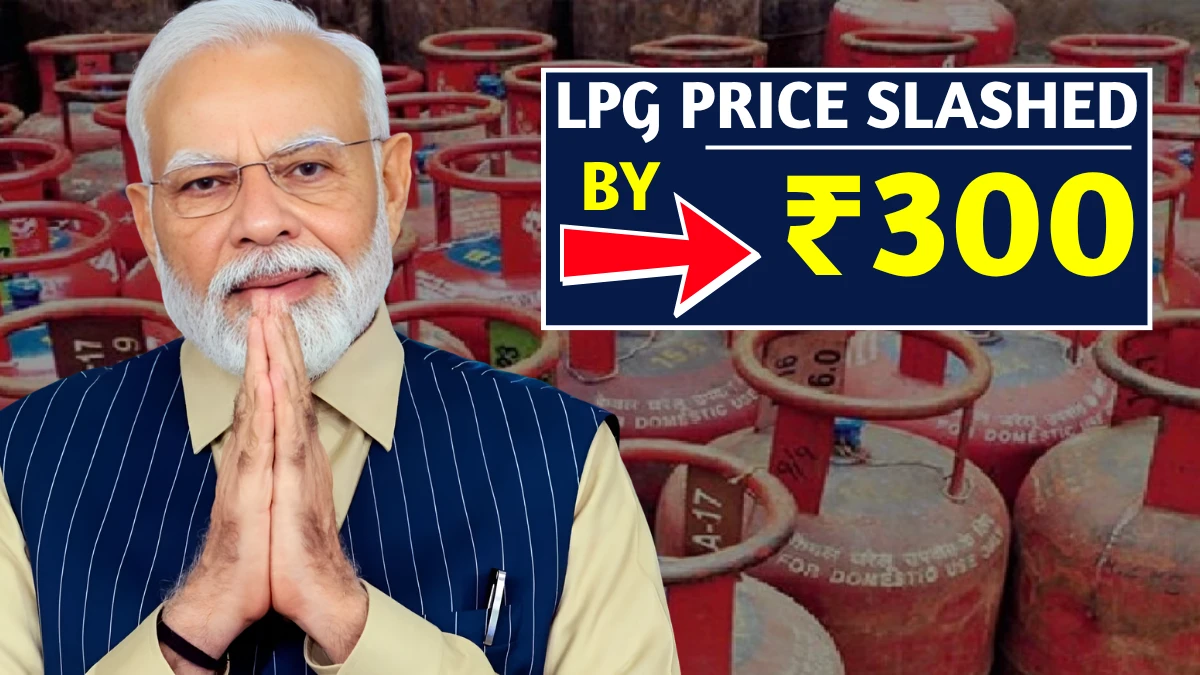LPG Price Slashed by ₹300: The news that LPG prices have been reduced by ₹300 has sparked a wave of optimism among households across India. This significant drop in prices comes as a welcome relief for families who rely on liquefied petroleum gas (LPG) for their cooking needs.
LPG has long been an essential commodity in the country, and any change in its price directly impacts the daily lives of millions. The price reduction offers both immediate and long-term benefits to the public, which we will explore in detail below.

Understanding the LPG Price Cut
LPG, which is primarily used for cooking in Indian households, has always been subject to market fluctuations. Prices of LPG cylinders have seen steady increases over the past few years due to rising global oil prices and changing market dynamics. The price of a 14.2 kg LPG cylinder has been reduced by ₹300, a move that is expected to offer substantial savings for families across the country. This reduction is being seen as a government measure to ease the financial burden on common citizens, particularly those from middle-class and lower-income groups.
Why the Price Cut Is Important
The reduction in LPG prices is important for several reasons. First, it directly affects the cost of living for households, especially in areas where cooking with LPG is the primary source of fuel. Over the past few years, many families have struggled with the rising cost of LPG cylinders, which has put a strain on household budgets. This price cut provides relief by making cooking gas more affordable for everyone. Additionally, the reduction signals the government’s intent to ease inflationary pressures and stabilize the cost of essential goods in the market.
Impact on Households
For many households, the price of LPG is a recurring cost. A typical family might require one or two cylinders per month, depending on the size of the household and their cooking habits. The ₹300 reduction can result in savings of ₹600 or more annually, which, while not a life-changing amount, can certainly make a difference to families living paycheck to paycheck. This saving can be redirected to other essential needs, such as education, healthcare, or savings.
Moreover, for the lower-income groups, the price reduction could significantly ease the financial stress that comes with managing household expenses. Many families, especially in rural areas, have been using subsidized LPG cylinders for years. With this reduction, they too can experience the benefits of reduced cooking costs.
The Role of Government Subsidies
The government’s decision to cut LPG prices is also tied to its ongoing efforts to manage subsidies for essential goods. LPG is one of the most widely used cooking fuels in India, and the government has long been providing subsidies to make it affordable for citizens. These subsidies are particularly aimed at the economically weaker sections of society. The reduction of ₹300 per cylinder is a part of the broader strategy to keep the prices manageable for the masses while promoting cleaner, safer alternatives to traditional cooking methods such as firewood and kerosene.
In the past, price hikes in LPG have often led to public outcry, particularly during times of rising inflation. By reducing the price, the government has shown that it is attentive to the financial pressures faced by the common people. This move is expected to improve the public’s trust in the government’s commitment to addressing economic challenges faced by ordinary citizens.
What Led to the Price Cut?
The reduction in LPG prices is largely attributed to fluctuations in the international crude oil market. LPG prices are closely tied to the cost of crude oil, and when global oil prices decrease, it often results in a drop in LPG prices. Recently, there has been a slight dip in international oil prices, and this has been reflected in the domestic prices of LPG as well.
Additionally, the government’s proactive stance in managing subsidies and maintaining price stability has helped absorb the price shocks from the global market. By reducing the price, the government is also seeking to mitigate the adverse effects of inflation on domestic consumers. The move is timely, given that prices of other essential goods, such as vegetables, transportation, and fuel, have also seen upward trends in recent months.
Consumer Reactions to the Price Drop
Consumers have responded positively to the LPG price reduction. Many have expressed relief on social media, with families feeling the immediate benefit of lower gas prices. For many households, cooking gas is an unavoidable expense, and every little reduction counts. In a country like India, where a large portion of the population depends on LPG for daily cooking, the price cut is being seen as a win for the common man.
Furthermore, this price reduction may encourage more families to switch to LPG from traditional cooking methods such as wood or kerosene. These traditional fuels often have health and environmental impacts, and the affordability of LPG can incentivize people to make the switch, which in turn can improve health outcomes and reduce pollution.
Will the Price Stay at This Level?
While the price cut is a welcome change, many are wondering whether it will last or if prices will rise again in the future. Like all commodities, LPG prices are subject to market forces, including international oil prices and global economic conditions. The government has indicated that it will continue to monitor the situation closely and adjust prices as needed. However, given the volatile nature of global oil markets, there is always a possibility of price fluctuations in the future.
For now, the reduction provides much-needed respite to consumers. It is likely that the government will continue to manage subsidies and monitor oil price trends to ensure that LPG remains affordable for all.
Conclusion: A Step in the Right Direction
The recent ₹300 reduction in LPG prices is a much-needed relief for households across India. It comes at a time when the cost of living is rising and many families are struggling to make ends meet. This price cut is expected to have a positive impact on the daily lives of millions, especially those in rural and lower-income areas. It also reflects the government’s commitment to making essential commodities like LPG more accessible and affordable for all. While it is difficult to predict how long this price cut will last, for now, it offers a glimmer of hope and a bit of financial relief to those who need it the most.
As the situation continues to evolve, consumers will be keeping a close eye on future price changes. However, for today, the reduction in LPG prices is a welcome change that will bring joy to many families across the country.
Disclaimer
The information provided in this blog post is based on the latest available data at the time of writing. LPG prices are subject to change due to fluctuations in the global oil market, government policy decisions, and other economic factors. While efforts have been made to ensure the accuracy of the information, we encourage readers to verify current LPG prices through official sources or local authorities. The views expressed in this post are for informational purposes only and do not constitute financial or investment advice.
